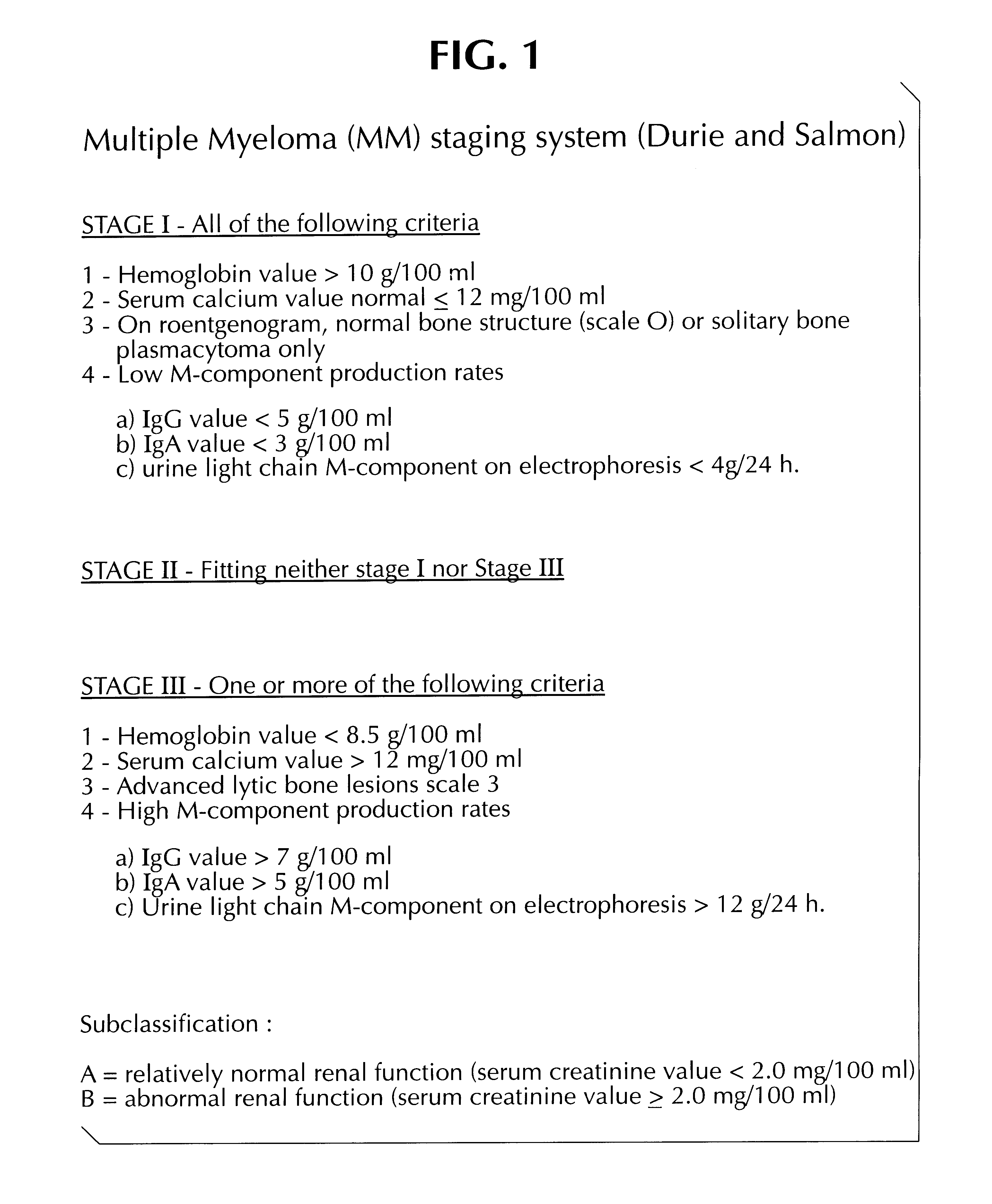Method for diagnosing multiple myeloma by determining tumor rejection antigen precursors
- Summary
- Abstract
- Description
- Claims
- Application Information
AI Technical Summary
Problems solved by technology
Method used
Image
Examples
example 2
One approach to cancer therapy is the use of cytolytic T cells, either autologous or allogeneic, which are specific to complexes of peptides and MHC molecules. These "CTLs" recognize and lyse the cells which present the complexes. It was of interest to determine if CTLs could recognize and lyse myeloma cells. In these experiments, CTL clone 434 / 1 was used. This line was derived from the blood of a patient who was typed as positive for HLA-A1 positive and was diagnosed with hemochromatosis. To derive the line, blood samples were stimulated repeatedly with autologous, phytohemagglutinin-A simulated T cells, which had been pulsed with an HLA-A1 binding peptide derived from MAGE-3, i.e., EVDP1GHLY (SEQ ID NO: 27). See U.S. Pat. No. 5,405,940, incorporated by reference.
The CTL was combined with myeloma cell lines EJM and U266, as well as control line MZ2-MEL. These three lines have similar, high expression levels for MAGE-A3, as determined by PCR. (MZ2-MEL is disclosed in, e.g., the '940...
example 3
A series of immunohistochemical experiments were then carried out, using EJM and U266, both of which are MAGE-A3 positive, as described supra, the myeloma line "Fravel", which is a MAGE-A3 negative line, as well as cells from gut biopsy taken from a myeloma patient who was receiving chemotherapy, and had developed skin and gut plasmacytomas. The patient had tested positive for MAGE-A3 expressing, stage III myeloma. A bone marrow sample was taken from a different patient with MAGE-A3 expressing stage III myeloma. Finally, a bone marrow cytospin was taken from a patient who had a myeloma in relapse after two autografts.
The myeloma cell lines, and one of the bone marrow cells were washed in Tris buffered saline, and cytospinned at 500 rpm for 4 minutes on microscopic slides (10.sup.5 cells / slide). The cells from the bone marrow of the second patient were smeared onto slides. All were air dried at room temperature, wrapped in aluminum foil, and stored at -80.degree. C. until needed.
When...
PUM
| Property | Measurement | Unit |
|---|---|---|
| Therapeutic | aaaaa | aaaaa |
Abstract
Description
Claims
Application Information
 Login to View More
Login to View More - R&D
- Intellectual Property
- Life Sciences
- Materials
- Tech Scout
- Unparalleled Data Quality
- Higher Quality Content
- 60% Fewer Hallucinations
Browse by: Latest US Patents, China's latest patents, Technical Efficacy Thesaurus, Application Domain, Technology Topic, Popular Technical Reports.
© 2025 PatSnap. All rights reserved.Legal|Privacy policy|Modern Slavery Act Transparency Statement|Sitemap|About US| Contact US: help@patsnap.com

